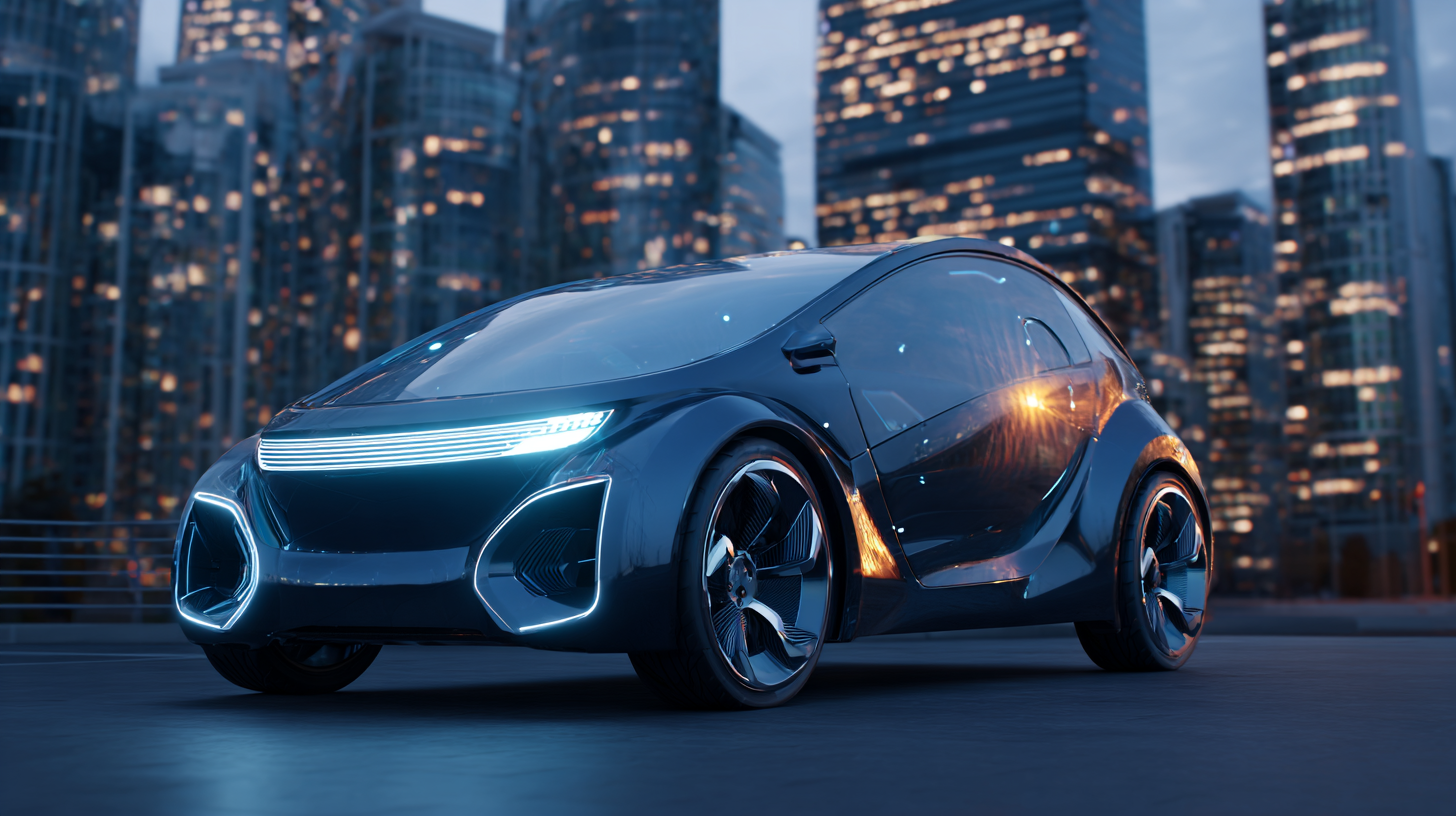Leave Your Message
As the world grapples with the escalating climate crisis, the automotive industry is undergoing a significant transformation towards sustainability, with "Energy Cars" leading the charge. These vehicles, powered by alternative energy sources such as electricity, hydrogen, and biofuels, are not just a trend; they represent a fundamental shift in how we perceive transportation. According to a recent report by the International Energy Agency (IEA), electric vehicle sales surged by 40% in 2020 alone, signaling a growing consumer acceptance of energy-efficient technologies. Furthermore, as governments worldwide implement stricter emissions regulations, the demand for Energy Cars is projected to increase, with estimates suggesting that by 2030, they could account for more than 30% of global car sales. In this guide, we will explore what Energy Cars are, the technology behind them, and how they are reshaping the future of sustainable transportation.

Energy cars, often referred to as electric vehicles (EVs), are automobiles powered entirely or in part by electric energy, typically stored in batteries. These vehicles utilize advanced technologies such as regenerative braking, which converts kinetic energy back into stored energy, improving efficiency. Energy cars represent a significant shift in transportation, utilizing renewable energy sources and reducing reliance on fossil fuels. Understanding the innovation behind energy cars helps us appreciate their role in creating a more sustainable future.
When considering energy cars, one tip is to look into the types of batteries used, as they directly impact the vehicle's range and charging time. Lithium-ion batteries are the most common due to their high energy density and longevity. Additionally, potential buyers should explore available incentives for purchasing energy cars, as many governments offer tax breaks or rebates to encourage the adoption of cleaner transportation options. Embracing these technologies can lead to substantial savings in fuel costs and a lower environmental impact.
Another important aspect to consider is the charging infrastructure. It's wise to research local charging stations and home charging solutions before making a purchase. Many cities are investing in expanding their electric vehicle charging networks, making it easier than ever to own an energy car. Staying informed about these developments can help drivers plan their journeys and charge efficiently, ensuring a smooth transition to this sustainable mode of transportation.
The rise of energy cars is revolutionizing the automotive industry, ushering in a new era of sustainable transportation. As consumers increasingly prioritize eco-friendly alternatives, manufacturers are compelled to pivot towards electrification and hybrid technologies. This shift not only aims to reduce carbon emissions but also positions companies to capitalize on the growing market demand for sustainable vehicles. The economic impact is profound, as automakers allocate substantial investments in R&D, leading to innovative advancements and job creation—effectively transforming the landscape of the automotive sector.

Moreover, the proliferation of energy cars is influencing supply chains and supplier relationships. Companies are seeking partnerships with battery manufacturers and sustainable material suppliers, prompting an entire ecosystem geared towards sustainability. This reconfiguration is stimulating regional economies, especially in areas specializing in technological innovations. Additionally, government incentives and tightening regulations surrounding emissions are driving this transformation further, compelling more businesses to pivot into the energy car landscape. As a result, the automotive industry is not only adapting but thriving in response to the challenges and opportunities presented by energy cars.
Energy cars, also known as electric vehicles (EVs), represent a transformative shift in the automotive industry, significantly contributing to emission reductions and promoting sustainability. By utilizing electric power instead of traditional fossil fuels, these vehicles produce zero tailpipe emissions, effectively decreasing air pollution in urban environments. This reduction in harmful pollutants not only fosters better air quality but also aids in combating climate change, aligning with global efforts to meet carbon reduction targets. As energy cars gain widespread adoption, cities stand to benefit immensely from cleaner air and a dramatic drop in greenhouse gas emissions.
In addition to their immediate environmental benefits, energy cars play a vital role in advancing sustainable transportation infrastructure. As more consumers transition to electric vehicles, the demand for renewable energy sources surges, stimulating investments in solar, wind, and other sustainable energy technologies. This symbiotic relationship between energy cars and renewable energy fosters a more resilient and sustainable energy grid, decreasing reliance on non-renewable resources. Furthermore, as battery technology continues to improve, energy cars promise enhanced efficiency and lower lifecycle emissions, paving the way for a greener future in transportation. By embracing this shift, we open the door to innovative solutions that reduce our overall environmental footprint while reshaping mobility for generations to come.
Government policies and incentives play a crucial role in promoting the adoption of energy cars worldwide. According to a report by the International Energy Agency (IEA), global electric vehicle (EV) sales reached a record 6.6 million in 2021, largely driven by government initiatives. Many countries, including Norway, Germany, and China, offer substantial subsidies and tax incentives that substantially reduce the effective purchase price of EVs, making them an attractive option for consumers.
 Norway, for instance, provides exemptions from value-added tax (VAT) and road tolls, contributing to over 54% of new car sales being zero-emission vehicles in 2021.
Norway, for instance, provides exemptions from value-added tax (VAT) and road tolls, contributing to over 54% of new car sales being zero-emission vehicles in 2021.
Furthermore, regulatory measures such as stringent emissions standards are pushing automakers to innovate and invest in cleaner technologies. The European Union has set a target to cut carbon emissions from vehicles by at least 55% by 2030, prompting manufacturers to accelerate their shift towards energy-efficient models. According to a study by McKinsey & Company, investments in EV infrastructure, including charging stations, are expected to reach $50 billion over the next five years, driven by both government funding and private sector partnerships. These incentives and policies not only boost the energy car market but also contribute significantly to global efforts in combating climate change.
Energy cars represent a vital shift towards sustainable transportation, integrating innovative technologies that promise to reshape our future. As we witness the emergence of electric vehicles (EVs), hydrogen fuel cells, and even solar-powered cars, these innovations are crucial for reducing our carbon footprint and reliance on fossil fuels. The increasing efficiency of battery technologies not only enhances vehicle performance but also addresses common concerns about range anxiety, making energy cars more accessible and appealing to consumers.
To maximize the benefits of energy cars, consider these tips: First, research local incentives for adopting energy vehicles—many regions offer substantial tax breaks and rebates for EV purchases. Secondly, participate in community charging initiatives. Engaging with a network of charging stations can ease the transition to electric driving while promoting a shared commitment to sustainability. Lastly, stay informed about advancements in renewable energy sources, which can power these vehicles, ensuring that the environmental impact is as low as possible. Embracing these innovations not only supports a cleaner planet but also fosters a culture of sustainability and awareness in everyday transportation choices.






